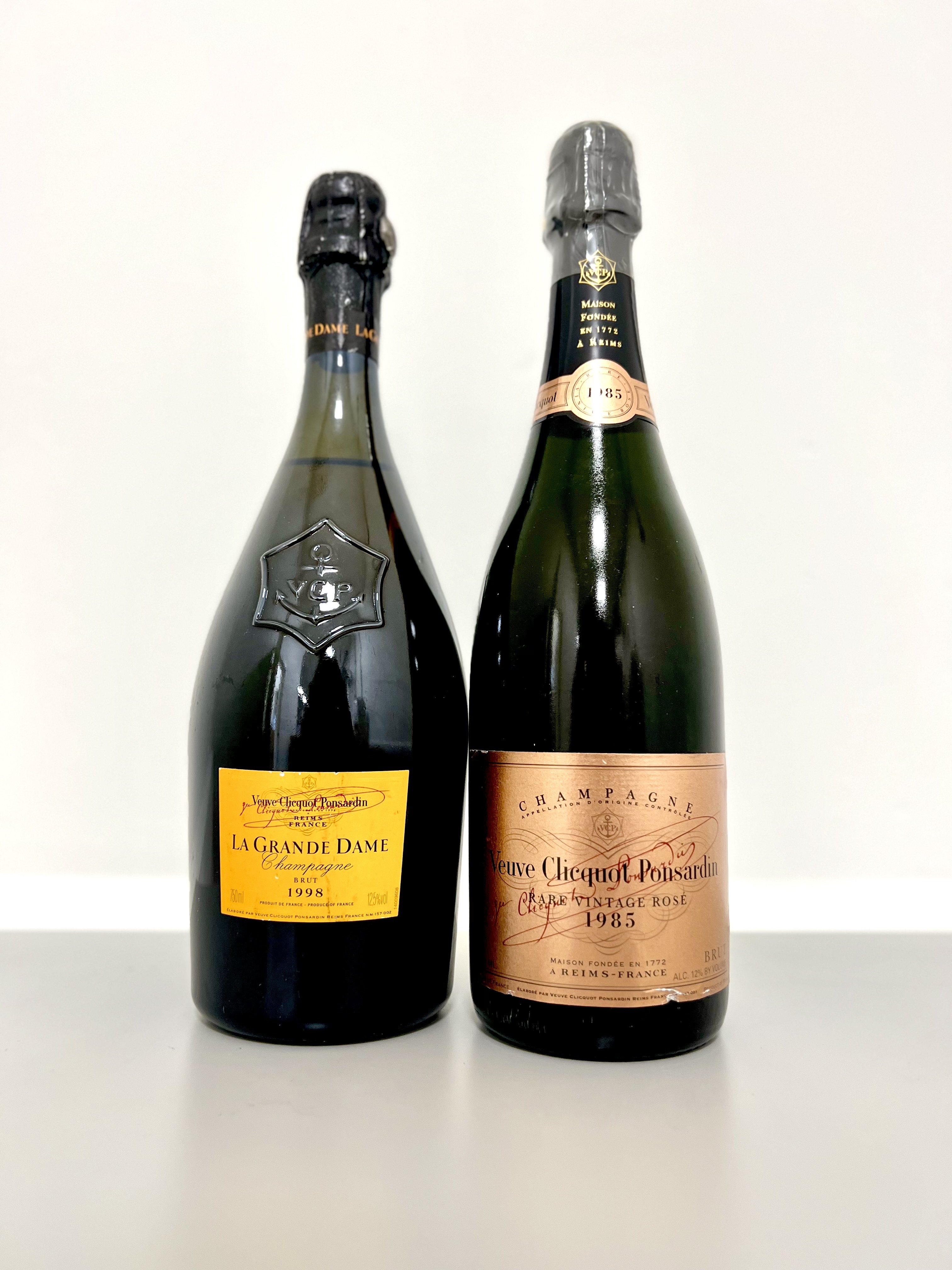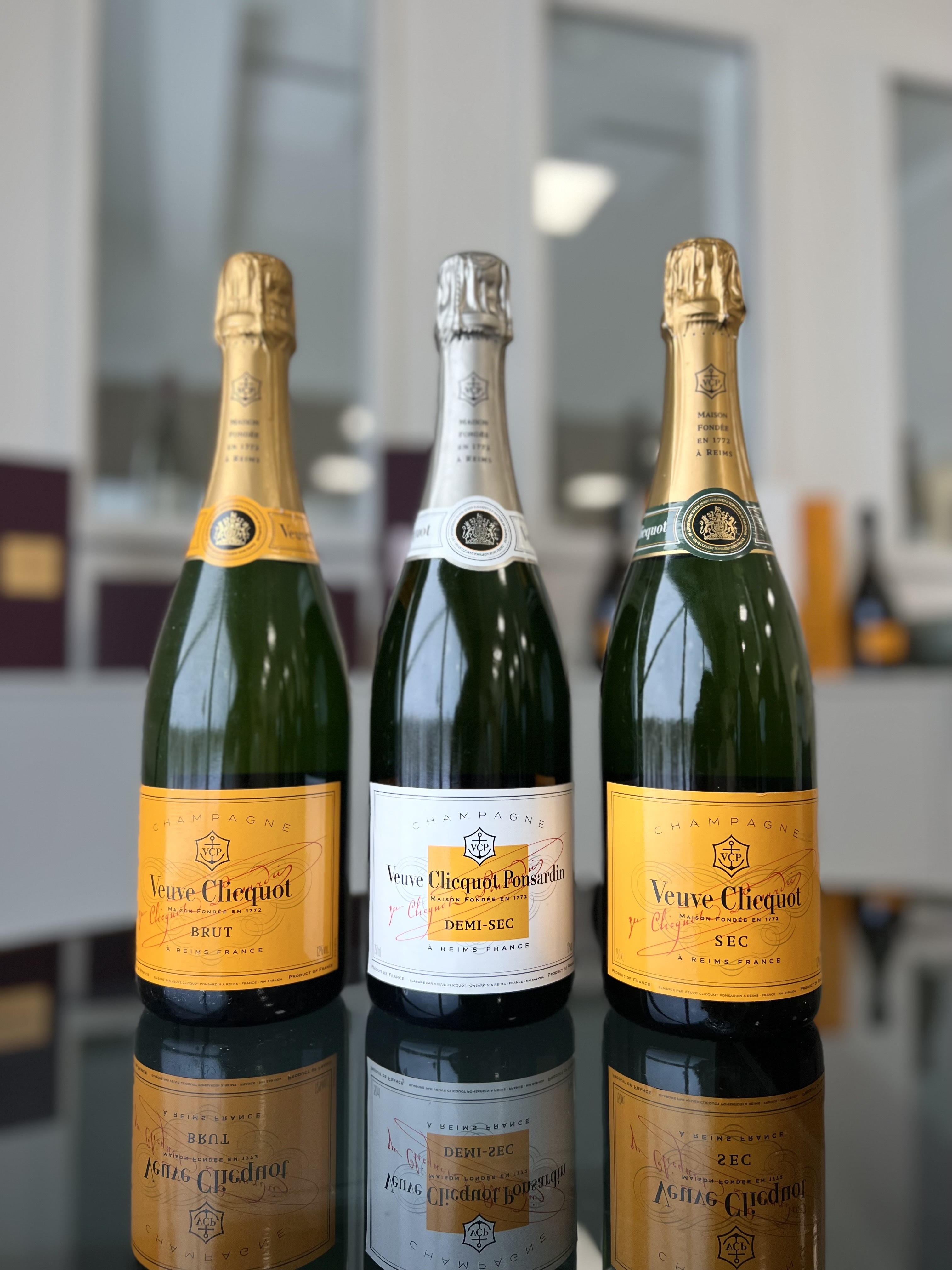Veuve Clicquot's Production Facilities
Veuve Clicquot owns about 390 hectares of vineyards in some of the finest Grand Cru and Premier Cru areas in Champagne, including Montagne de Reims, Côte des Blancs, and Vallée de la Marne. Around 95% of its vineyards are classified as Grand or Premier Cru.
The wines are aged in historical chalk cellars that extend over 24 kilometers underground, offering ideal aging conditions with stable temperature and humidity.
The house produces and sells over 20 million bottles of champagne per year, making Veuve Clicquot one of the top-selling champagne brands in the world.
Environmental Commitment
Veuve Clicquot actively works to reduce its environmental impact through:
Organic farming practices
Rainwater and grape pomace recycling
Use of electric tractors in the vineyards
Biodiversity initiatives
A goal to become CO₂ neutral in production by 2030
In 2022, it launched the world’s first fully recyclable champagne packaging made from hemp
Fun fact: In 2010, Veuve Clicquot champagne bottles nearly 200 years old were discovered in a shipwreck in the Baltic Sea. One of these bottles was sold at a wine auction for around €30,000. Veuve Clicquot later experimented with underwater cellaring, planning to reopen the submerged bottles in 40 years to study the effects of aging under water.

Veuve Clicquot's Most Popular Cuvées
Veuve Clicquot offers a wide range of cuvées, from the classic Brut to exclusive vintage and prestige labels.
Veuve Clicquot Brut Yellow Label
The house’s flagship champagne, introduced around 1835–1837 and officially trademarked in 1877. It’s a blend of 50–60 different crus, typically consisting of:
50–55% Pinot Noir
28–33% Meunier
15–20% Chardonnay
Tasting notes include green apple and pear, with creamy brioche and nutty aromas from extended aging (minimum 30–36 months on the lees).
Veuve Clicquot La Grande Dame
Named after Madame Clicquot, this is the house’s prestige cuvée, known for its finesse and complexity. Introduced in 1972 to mark the 200th anniversary, it's made only in exceptional vintages—usually with up to 90% Grand Cru Pinot Noir and a touch of Chardonnay. Aged for 7 years on the lees.
Veuve Clicquot Rosé
Famous for its notes of wild strawberries and raspberries, this rosé is made by blending still red and white wine—a method Madame Clicquot invented.
Veuve Clicquot Vintage
Produced only in exceptional years, these champagnes are aged for at least 5 years, showcasing both the character of the vintage and the house style.
Veuve Clicquot Brut Rosé NV
Similar in composition to Yellow Label, but with ~12% still red Pinot Noir added for color and berry notes.
Veuve Clicquot Rich cuvée
Launched in 2015, this sweeter non-vintage champagne is designed for modern consumption and cocktail use. Typically served over ice with fruit garnish. Not intended for long aging.
Veuve Clicquot Extra Brut Extra Old
The house’s first ultra-dry cuvée, made primarily from reserve wines from at least six vintages, with low dosage and extended aging for greater depth and intensity.
Veuve Clicquot Tasting Profile
Veuve Clicquot's house style is structured and full-bodied, driven by the dominance of Pinot Noir—especially in Yellow Label and La Grande Dame. Chardonnay adds freshness and finesse, while Meunier brings fruitiness and roundness.
General tasting profile:
Fruit: Citrus, pear, peach, red berries
Bread notes: Brioche, toast, almond
Minerality: Chalk and stone
Mouthfeel: Creamy and round with vibrant acidity
Fun fact: Veuve Clicquot champagne has accompanied expeditions to both the Arctic and Mount Everest.
Frequently Asked Questions about Veuve Clicquot
Founded in 1772, it is one of the oldest champagne houses in the world.
Most cuvées, especially the Brut Yellow Label, are dry, with balanced fruit sweetness.
Perfect with seafood, fish, chicken, sushi—even popcorn, thanks to its vibrant acidity and fine bubbles.
Founded in 1772, it is one of the oldest champagne houses in the world.
Perfect with seafood, fish, chicken, sushi—even popcorn, thanks to its vibrant acidity and fine bubbles.
Most cuvées, especially the Brut Yellow Label, are dry, with balanced fruit sweetness.
